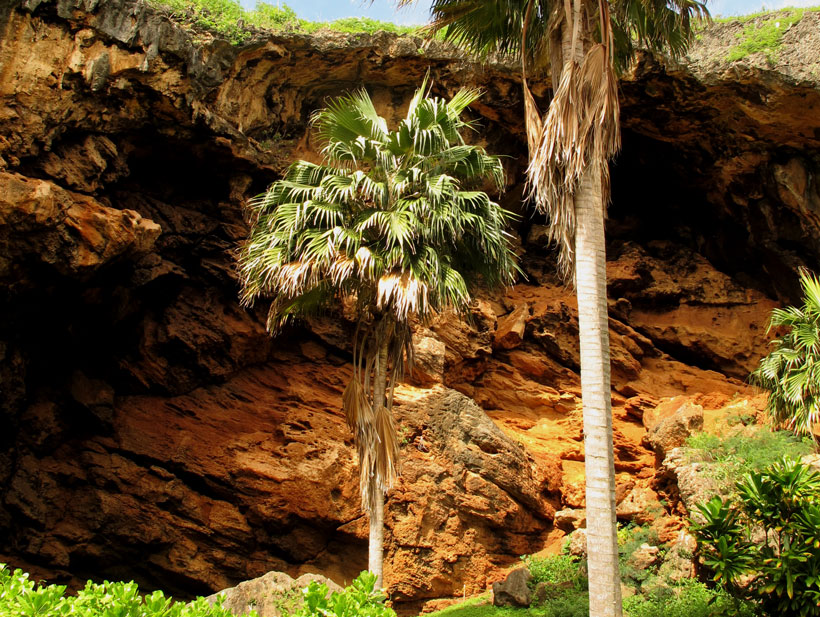Recent large earthquakes and tsunamis spawned by them have devastated coastal communities around the world, taking many of them by surprise. To alleviate that element of surprise and thus reduce devastation, scientists are helping vulnerable areas become fully aware of their history of tsunami occurrence so that they can better prepare for the future. Hawaii in particular is extremely vulnerable because its position in the middle of the Pacific Ocean leaves it exposed to tsunamis from all directions.
Past research has determined that a large subduction zone earthquake in Alaska’s Aleutian Islands could hurtle a tsunami toward Hawaii. However, although there is archaeological and legendary reference to such an event, there is little geological evidence to prove it. To fully investigate Hawaii’s tsunami history, Butler et al. turned to the Makauwahi sinkhole on the island of Kauai, where previous researchers had found a layer of sediment that they attributed to a tsunami deposit.
The authors used a tsunami modeling system to simulate several tsunamis originating from the Aleutian Islands, tweaking magnitude and subduction zone earthquake geometry. They found that an earthquake with a magnitude of about 9.2 originating from the Aleutian subduction zone at a particular fault displacement could have induced a tsunami large enough to inundate the Makauwahi sinkhole.
The authors then sought physical evidence of a tsunami and earthquake from Sedanka Island in the Aleutians, Japan, and the Pacific Northwest. They found tsunami deposits that correlate in age to the deposit in the Makauwahi sinkhole, suggesting that an Mw 9.2 earthquake originated in the Aleutian Islands between 350 and 575 years ago and induced the tsunami responsible for the deposits found in the Makauwahi sinkhole.
Although it is impossible to predict when another such earthquake might occur, the authors note that the research will help the Hawaiian Civil Defense better prepare the islands for future risk. (Geophysical Research Letters, doi:10.1002/2014GL061232, 2014)
—JoAnna Wendel, Staff Writer
Citation: Wendel, J. (2015), Tracking down a subduction zone earthquake, Eos, 96, doi:10.1029/2015EO023957. Published on 13 February 2015.
Text © 2015. The authors. CC BY-NC 3.0
Except where otherwise noted, images are subject to copyright. Any reuse without express permission from the copyright owner is prohibited.

